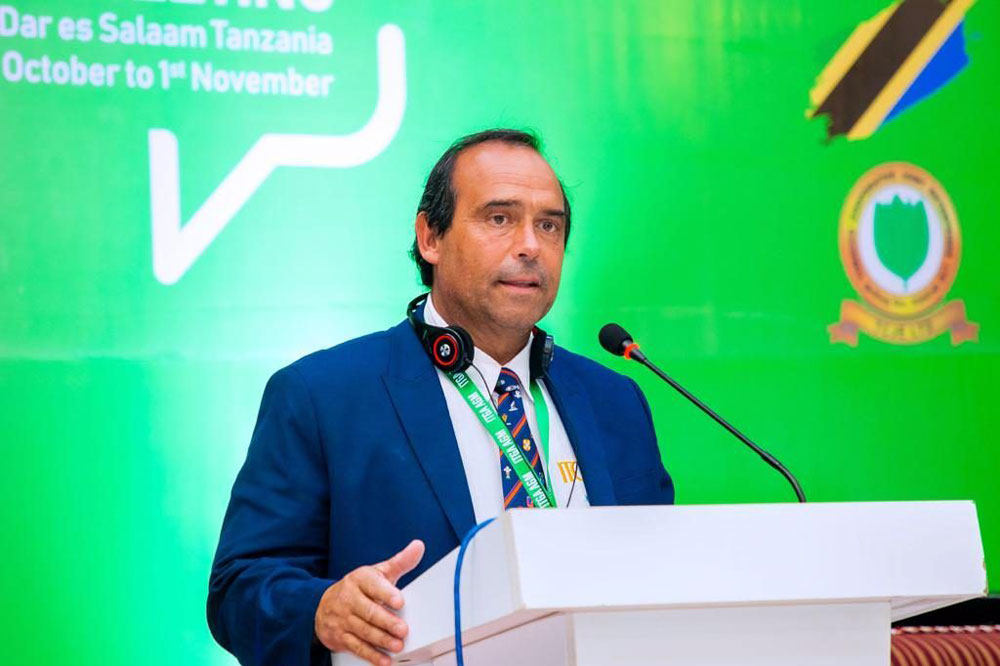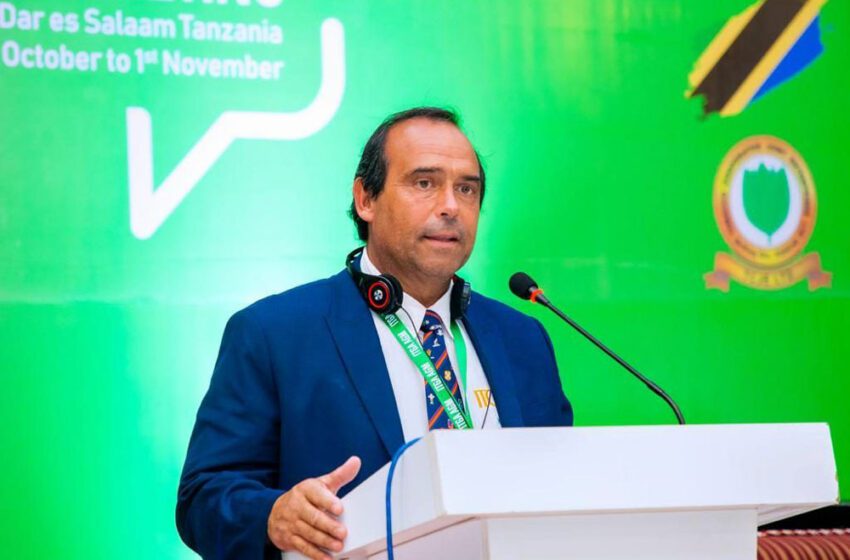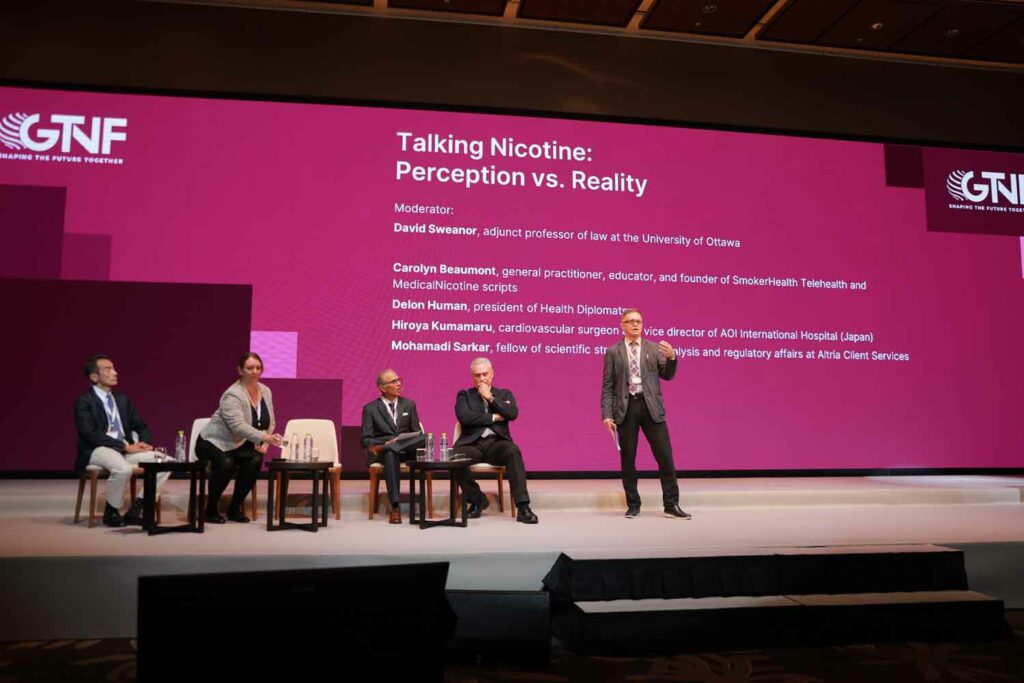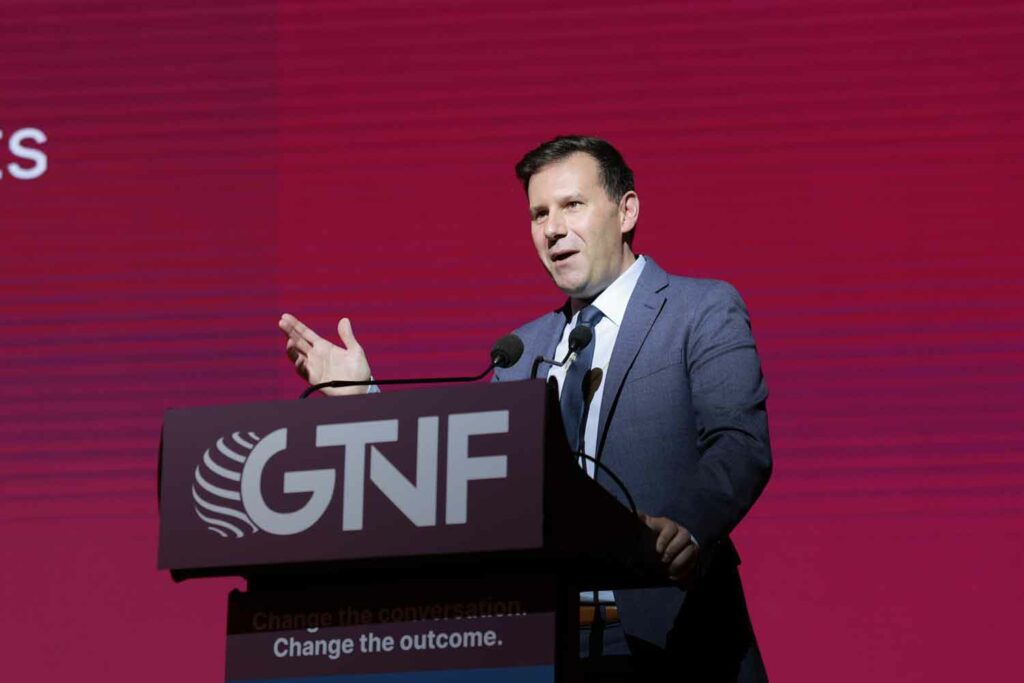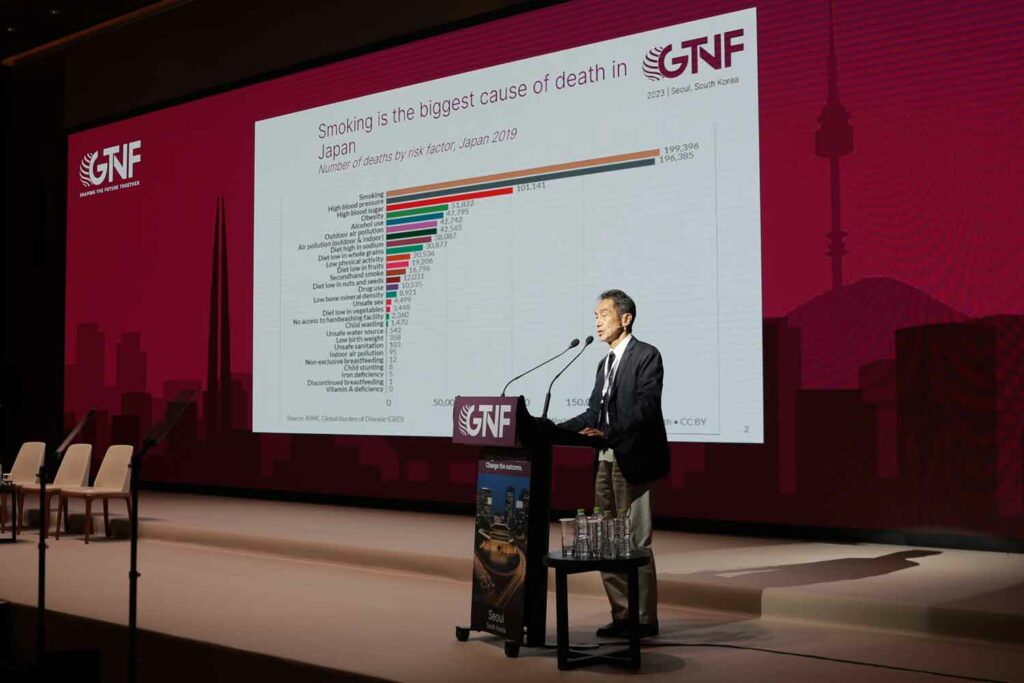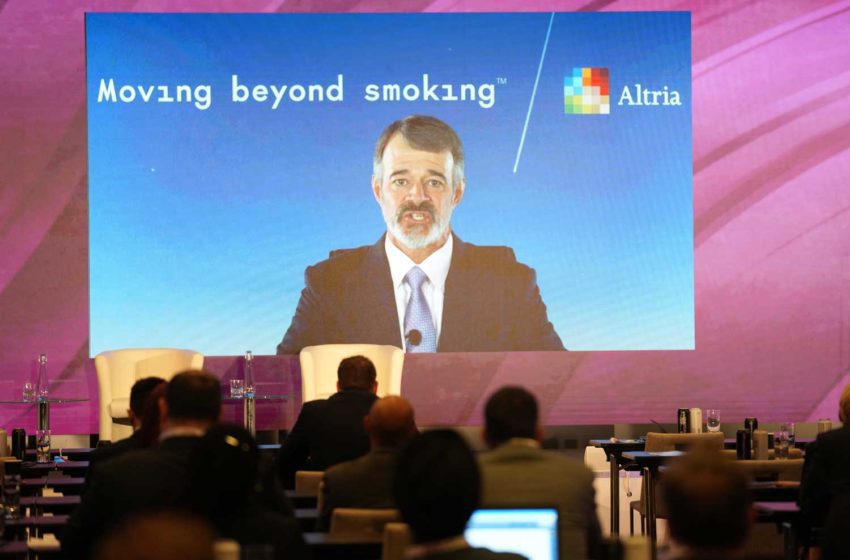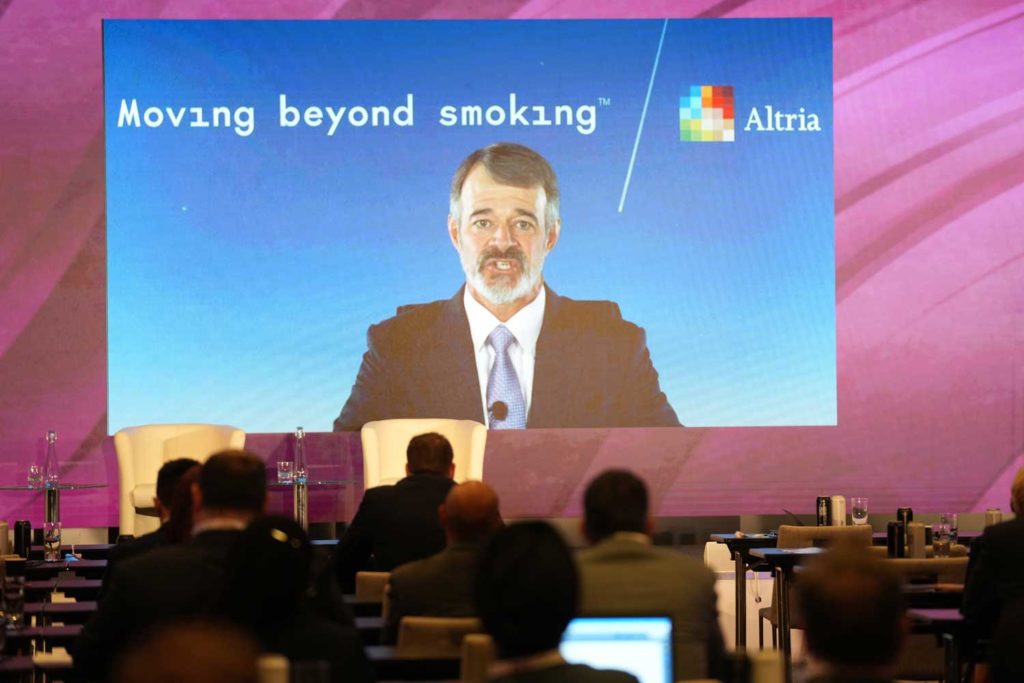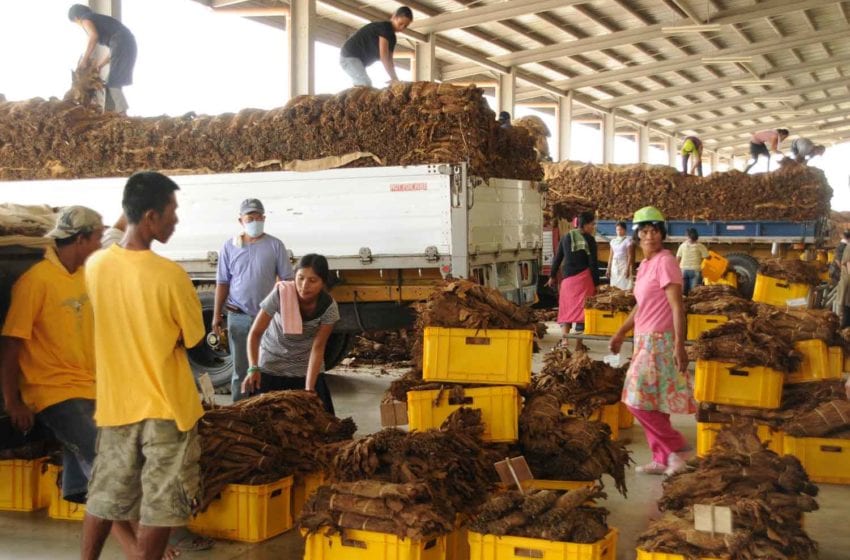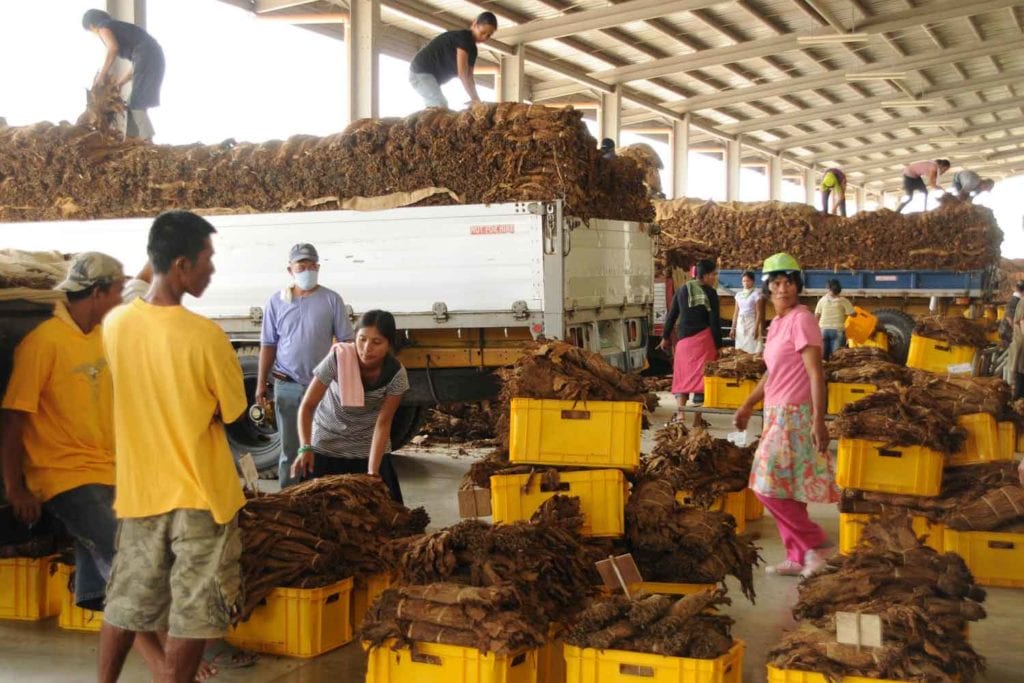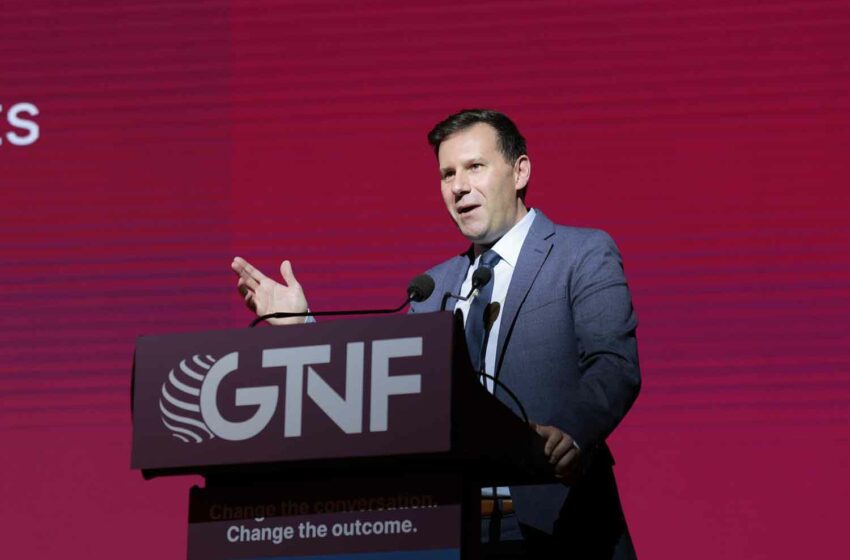Keynote: Brian King
When Brian King speaks, people come to listen. The U.S. Food and Drug Administration’s Center for Tobacco Products (CTP) director’s keynote address was easily the best attended session of GTNF 2023. King’s speech served as an overview of the current state of the CTP and an outline of the center’s main priorities over the next few years.
King said that the CTP has made considerable progress in reducing combustible cigarette smoking in the United States, which he contends as one of the most remarkable public health achievements of the past century. He hopes that those declines continue, given that “we do know” that combustible smoking is responsible for the overwhelming burden of death from using combustible tobacco.
Tobacco use continues to cost the U.S. government a considerable amount of money—to the tune of $600 billion per year from both direct healthcare costs and lost productivity, according to King. He said there are important human health benefits as well as financial benefits for regulators to continue to focus on reducing combustible use in the United States. As a part of this focus, he said, the CTP is continuing to make inroads when it comes to premarket tobacco production application review.
“We have a new director of our Office of Science who has jumped in headfirst to continue to fiercely lead our 550-plus scientists on application review …. We have processed 99 percent of those and continue to finalize the remaining 1 percent. I’m hopeful that in the coming months and years, we will get back to what was intended to be a premarket approval process,” said King. “In the meantime, we have authorized 23 e-cigarettes, all tobacco flavored. So, it is possible. We have had successful authorizations. But again, I can’t reinforce enough the importance of providing that sound and robust science to inform on potential authorization.
“And it is possible, as you can see. There will be more authorizations in the future, but it’s important that we have that science to support those decisions. As I noted earlier, we also continue to fold in the nontobacco nicotine work into our broader portfolio around regulation. We did receive a million applications, which I don’t think anyone anticipated. I will say that we are making great numbers. We are 99.9 percent through with the review of those. I will say that 100 percent is very imminent.”
King said that when it comes to products that are illegally on the market (having received a marketing authorization and are not currently under review by the CTP), the CTP is mindful of the importance in exercising all authorities that it has to ensure that people are complying with the law. He said that the FDA has given retailers the information they need to comply with the law through a list of authorized products (the 23 products that have been authorized for sale). The CTP also continues to ramp up efforts in terms of training, education and outreach across the supply chain, particularly to retailers.
“We also continue to do surveillance inspection investigations. This is something that occurs on a daily basis. We have arrangements with all 50 states and territories to continue to do investigations. We have issued many warning letters for flavored disposable e-cigarettes, which we know are particularly popular for youth,” said King. “There’s been a variety of blitzes that have occurred monthly throughout the summer. I will say there are more to come. We are going to continue to conduct those blitzes and making sure that we are routinely monitoring, particularly with a focus on those products that we know have high youth appeal.
“On balance, we are also continuing to do work around issuing import alerts. I was a little tickled by all the attention that the import alert on Elf Bar got. That’s nothing new, folks. We’ve been doing that for many years. It was suggested it was something seismographic, but we’ve been doing import alerts for quite some time. And we do use those as, again, another tool in our toolkit to make sure that we are addressing not only the products that are already in the country but preventing illegal products from entering the country.”
As of Sept. 31, the FDA has issued over 1,200 warning letters for online investigations. For manufacturers, the CTP has sent more than 800 warning letters, with more than 750 letters for e-cigarettes. Beginning earlier this year, the FDA also issued the first civil money penalties against manufacturers for violations for illegal e-cigarette sales. He said civil money penalties will remain a part of the CTP’s tools to combat illicit sales.
“We also issued the first six injunctions in coordination with the Department of Justice. I got a lot of flak for that as well about enlisting the Department of Justice. And I will remind folks that the FDA doesn’t have an independent litigation authority. If folks do not comply with the law, we will escalate further, as has been evidenced by these actions, which again are going to be part of our broader portfolio moving forward,” said King. “Everyone is going to be held accountable across the supply chain. We do want to make sure that we address the bad actors in a meaningful way. We also continue to pursue no tobacco sale orders among retailers as well. This has traditionally been issued for underage sales. But again, we’re committed to using the full scope of our authorities granted through Congress.”
King added that education is also a priority for the CTP. The center is ramping up efforts to address misinformation in the continuum of risk for nicotine products. He mentioned that he recently wrote a commentary where he highlighted the importance of opportunities and considerations for addressing misperceptions in nicotine. “There is science that exists in that there are misperceptions around the continuum of risk and also nicotine. And so, we do have opportunities that are present, but we have to follow the data-driven pandemic-based approach,” he explained. “That said, I’m putting my money where my mouth is …. We’re working with the National Institutes of Health for a funding opportunity to get more data on public health communication messaging about the continuum of risk.
“And as noted in that funding announcement, we’re looking for data both for the target population, which is called smokers, but also unintended populations, particularly youth. This is several million dollars on an annual basis, and we look forward to that kickstarting and getting data to inform our work.”
King said the CTP will also continue to gather input from the industry and the public. The CTP is creating a new office within the Office of the Center Director and is looking to hire a new director for Policy and Partnerships. “That posting is public,” he said. “And I’m looking forward to seeing those who have applied and getting someone in that seat to meaningfully oversee the product regulation portfolio across the center, particularly as we get that strategic plan in place.”
During the closing of his address, King said that he continues to be big on communication and stakeholder engagement. He expects to provide the industry with more opportunities for communication with the CTP. “I know that you’ll see in the future an evolution of our messaging. Both through our press releases, our social media and our [overall] messaging to make sure that we are clearer, simpler and more digestible,” he said. “I’ve been a bureaucrat for many years, but that doesn’t mean that I can’t communicate effectively with the general public. I think we can do better. I know we can do better.”
